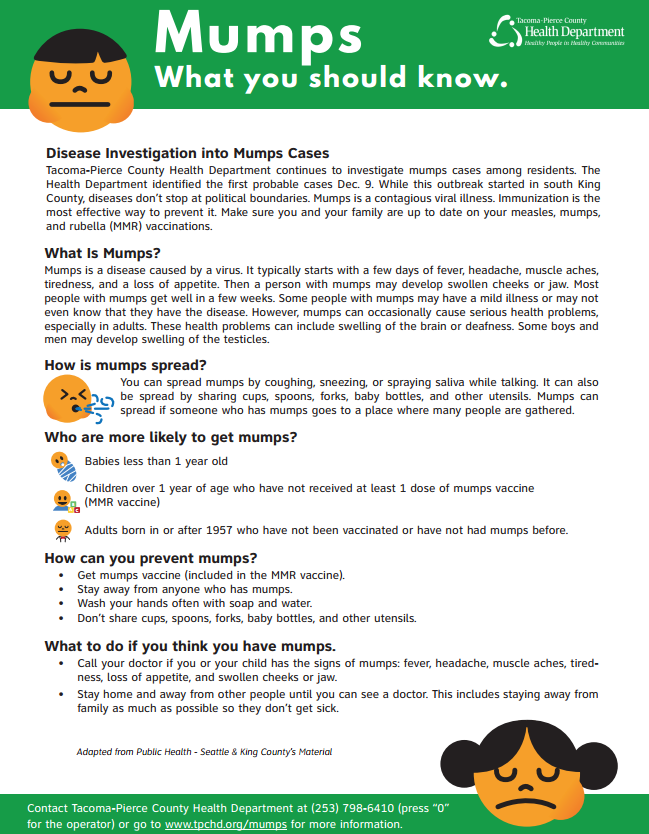The Spokane Regional Health District reported 152 cases of mumps in Spokane County as of Feb. 5, with several more under investigation, therefore, the number is expected to grow in coming days.
In King County, the number of current cases in the county stands at 179 (72 confirmed, 107 probable), with 61.5 percent reported as up-to-date on MMR vaccine.

As of Feb. 7, 44 confirmed and probable cases have been reported in Pierce County.
These and five other Washington counties that are reported mumps cases in the single digits puts the state’s mumps outbreak to at least 387 as of this writing.
Mumps is caused by a virus. It is usually rare in the United States because most people have received immunizations to protect them against mumps. People born before 1957 are probably immune to mumps because most people had the disease before the immunizations were routinely given starting in the early 1970s. Mumps is spread by close face-to-face contact with a person who has the infection.
Mumps is best known for the puffy cheeks and swollen jaw that it causes. This is a result of swollen salivary glands.
The most common symptoms include:
- Fever
- Headache
- Muscle Aches
- Tiredness
- Loss of Appetite
- Swollen and tender salivary glands under the ears on one of both sides (parotitis).
Symptoms usually appear 16-18 days after infection, but this period can range from 12-25 days after infection. Some people who get mumps have very mild or no symptoms, and often they do not know they have the disease.
A person with mumps should avoid prolonged, close contact with other people until at least five days after the start of the swollen glands because the person is contagious during this time. People who have mumps should not go to work or school, and stay home while they are contagious (5 days after the onset of gland swelling).
The MMR vaccine prevents most, but not all, cases of mumps and complications caused by the disease. People who have received two doses of the MMR vaccine are about nine times less likely to get mumps than unvaccinated people who have the same exposure to mumps virus. However, some people who receive two doses of MMR can still get mumps, especially if they have prolonged, close contact with someone who has the disease, and it has been several years since they were vaccinated. If a vaccinated person does get mumps, they will likely have less severe illness than an unvaccinated person.
Before there was a vaccine, mumps was a common childhood disease in the United States. In some cases, the disease caused complications, such as permanent deafness in children and, occasionally, swelling of the brain (encephalitis), which in rare cases caused death. From year to year, the number of mumps cases can range from roughly a couple hundred to a couple thousand. In some years, there are more cases of mumps than usual because of outbreaks.
Related:


3 thoughts on “Washington mumps outbreak up to at least 387 cases”